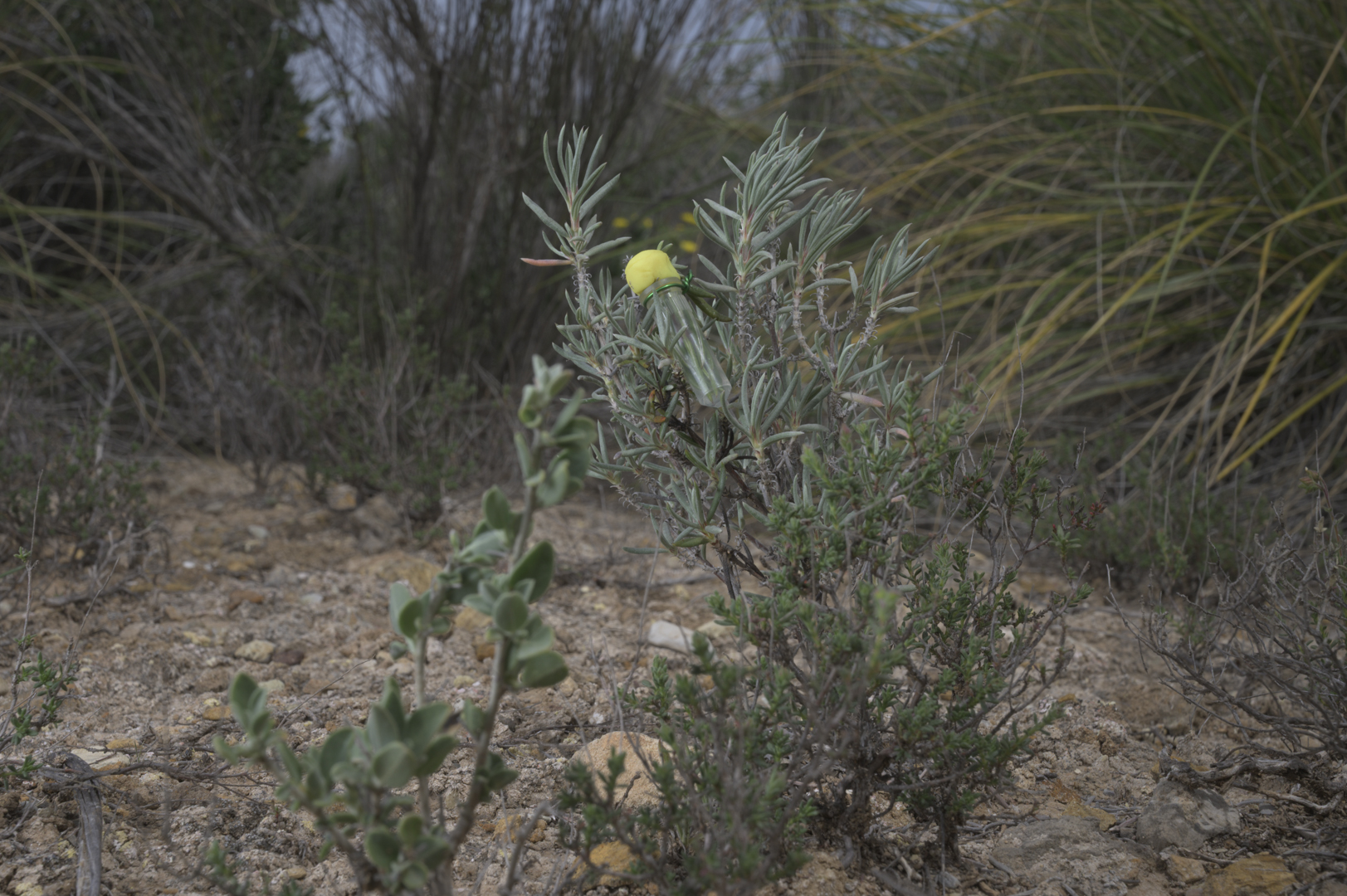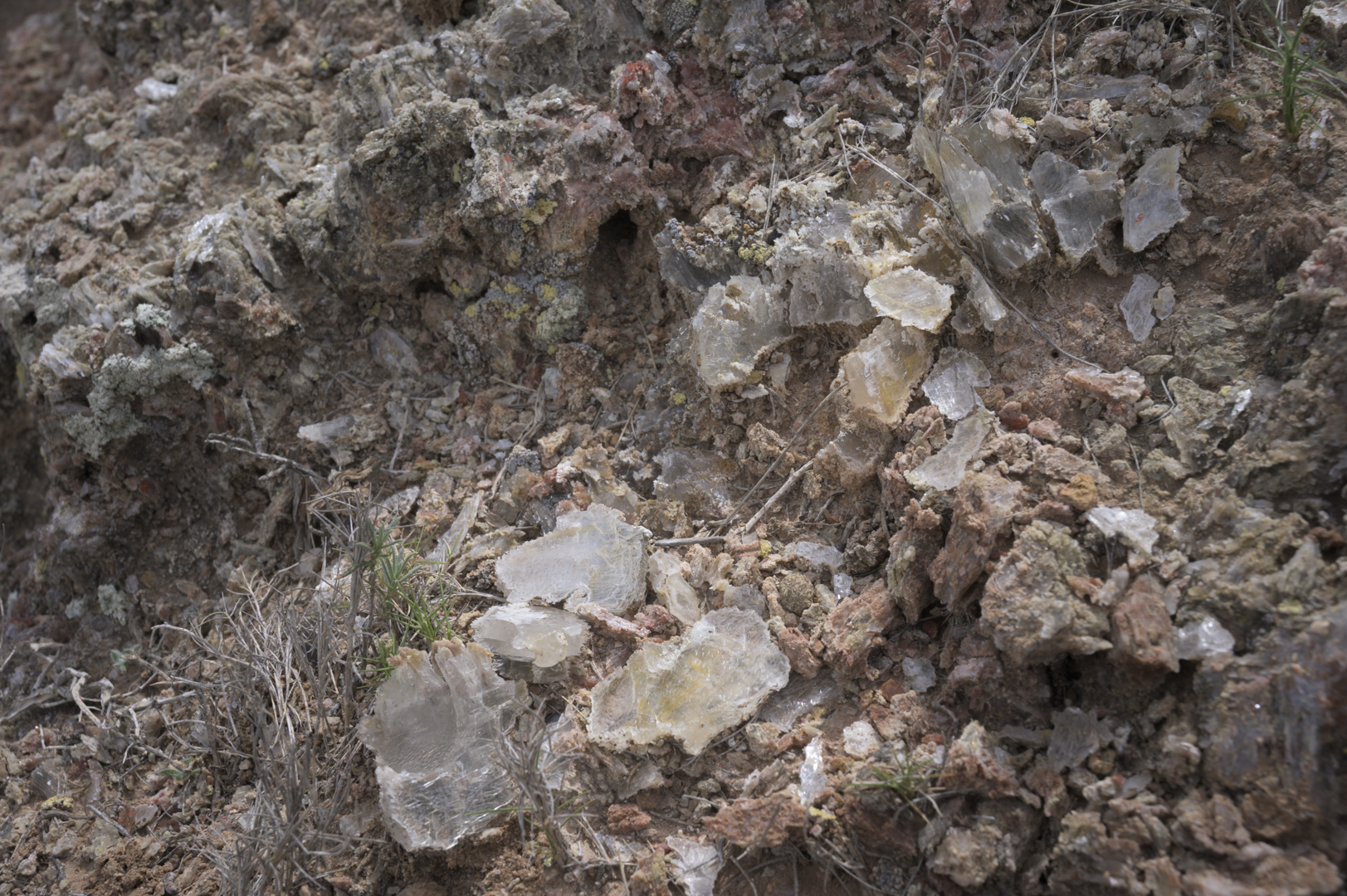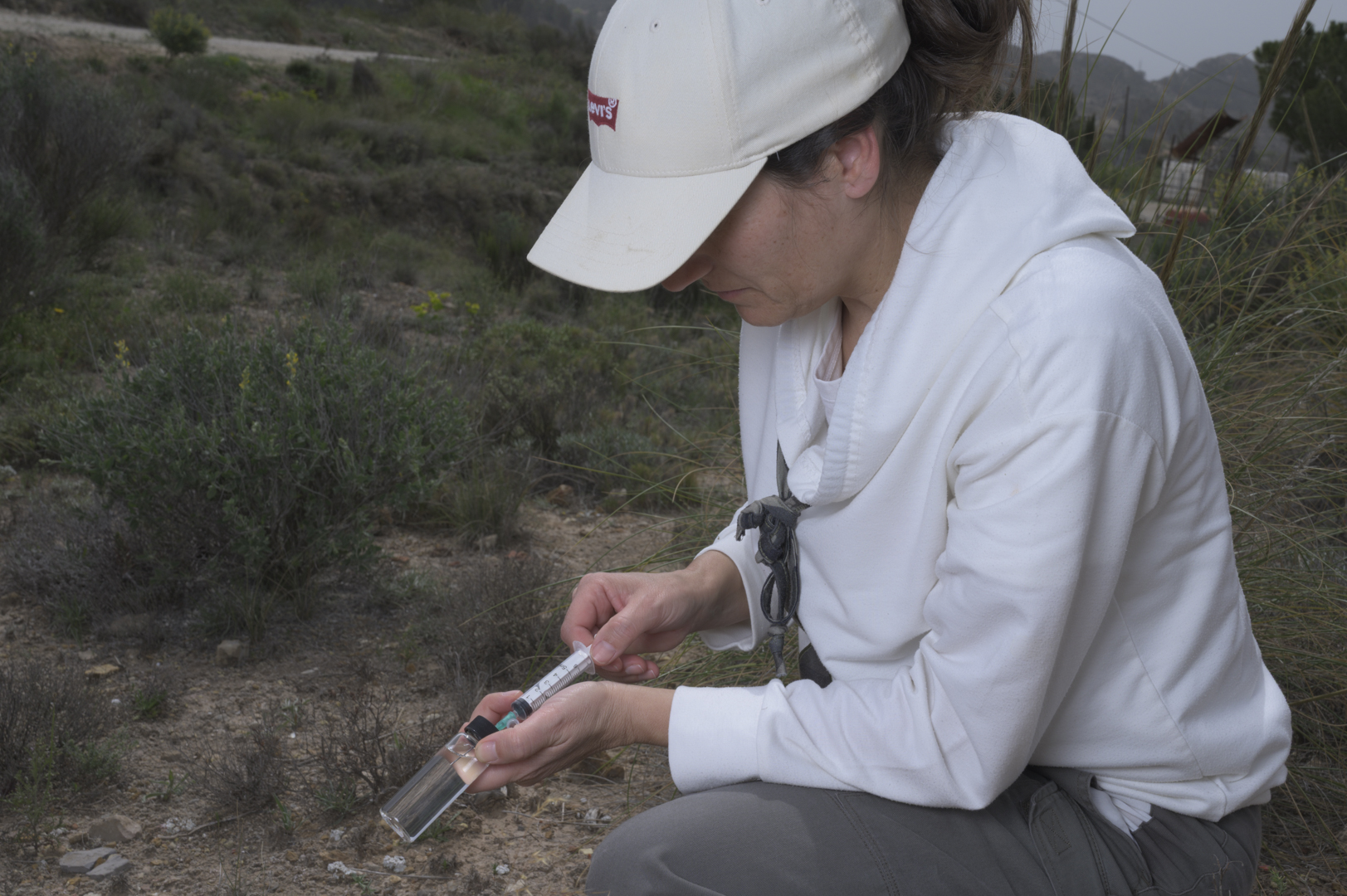
- CSIC researchers study plant survival mechanisms in arid areas, where gypsum rocks could act as a new water source
Gypsum soils are an underappreciated landscape. In contrast to picturesque forests, meadows or mountains, these territories offer more limited vegetation, distributed in small patches of unremarkable scrubland and more reminiscent of a desert. However, they could be the custodians of great advances.
Traveling through the vicinity of Petrer, Alicante, researcher Alicia Montesinos explains that perceiving these forgotten areas as sites with little value has implications for their conservation. This causes them to be used to locate industrial parks, dumps, motocross tracks and, more recently, solar plants. Other times, pine trees are planted to improve their aesthetics.
“These arid areas are not degraded landscapes, but treasures of sustainability, with key lessons to face a changing world, so it is important to value and protect them”, argues the scientist from the Desertification Research Center (CIDE, CSIC-UV-GVA).
The art of surviving extremes
Gypsum (calcium sulfate) soils are rare compared to other soil types in Spain, such as limestone or clay. They are usually found in arid areas, as is the case of the Tabernas desert in Almeria, or the emblematic Atacama desert in Chile. These extreme places have forced the species that inhabit them to develop unique adaptation mechanisms, because they are areas where water and nutrients are scarce. That is why, years ago, they also attracted the attention of researcher Sara Palacio.
This scientist from the Pyrenean Institute of Ecology (IPE-CSIC) did not understand how some small gypsum plants (gypsophilic), such as the scale rockrose (Helianthemum squamatum), flourished in midsummer with no apparent water available. After ruling out the most obvious options, such as rain, moisture from fog or groundwater, one idea began to gain more and more traction in his head: What if the plants were harnessing water from the structure of the gypsum mineral itself?
The secret of the Gypsum
Gypsum is a peculiar rock. In its natural state it can be found hydrated, i.e., with water in its crystalline lattice, or dehydrated. And some changes in its hydration occur at room temperature, which causes houses - and even train tracks - located in areas with gypsum soils to move slightly in summer, as the mineral dehydrates.
This circumstance led the researcher to consider that shallow-rooted plants such as Helianthemum might be using the water in the mineral structure - the water of crystallization - to survive. She observed that some specimens of scale rockrose even drilled into the gypsum rocks to introduce their roots there.
To test this hypothesis, Palacio designed an experiment in which he found that the water of crystallization retained in the internal structure of the rock was isotopically different from rainwater or subsoil water. That is, it could be differentiated from other possible types of water. With this methodology, Sara Palacio determined that up to 90% of the water used by the scales rockrose in summer could be water of crystallization.
Is it possible to get water out of stones?
That a plant could take advantage of the water contained in a rock, which is different from liquid or free water, was a novel approach. In gypsum, this water represents up to 20% of the rock. In subsequent work, researcher Laura de la Puente - also from IPE-CSIC - identified about 30 shallow-rooted plant species that could take advantage of this new source of water. And she found that they produced decreases in pH and organic acids with their roots that could affect the composition of the gypsum itself.
However, the researchers were unable to confirm whether the use of crystallization water was a passive process that the plant used or whether it was its own initiative. In other words, whether the plant actively created the water. Shortly afterwards, another study published in the Proceedings of the National Academy of Sciences suggested that some cyanobacteria in the Atacama Desert also obtained the water they needed from the gypsum rocks.
“The evidence seems to indicate that obtaining the water of crystallization is an active process of the plant, which it carries out together with the bacteria, fungi and other chemical armaments at its disposal,” explains Sara Palacio.
Unity is strength
This strategy is not the only one used by plants to survive in arid zones. Alicia Montesinos' team found that one of the keys to overcoming these conditions of high environmental stress is cooperation between species, facilitation.
For example, there are certain hardier plants that, once established in an area, alleviate environmental conditions under their canopy, providing shade and moisture, allowing others to live alongside them. The former are often referred to as facilitators or nannies. But collaboration can become very complex.
The CIDE (CSIC-UV-GVA) researcher found that the plants in the gypsum redistribute the available nitrogen among their neighbors. This is a critical resource, for example, for flowering. At the beginning of spring, plants that delay flowering - such as the scales rockrose, which flowers in midsummer - transfer more nitrogen to those that are already flowering. Thus, depending on their flowering rhythms, they take turns exchanging available resources.
To demonstrate this unsuspected collaborative network, Alicia Montesinos used stable isotopes of nitrogen as tracers, applying them to plants in the gypsums and later identifying the same isotopes labeled in their neighbors. In this way, she found that a more varied plant community improves its ability to retain nitrogen before the resource is no longer available in the soil.
"In the toughest places, plants find strength in company. The transfer of nutrients occurs to those who need it most at any given moment. They are a bit like societies with fewer resources, in which cooperation between people flourishes," reflects researcher Alicia Montesinos.
The treasure of arid zones
While these survival mechanisms need to be further investigated, they all call for a change in the way we look at drylands. They hold true secrets of survival, because some great advances are to be found where no one usually looks.
"In the world there are 1,300 plants that only grow in gypsum environments. That's not a lot of species, but if half of them are very rare and are in very few places we can't despise them. These environments have super-specialized organisms with metabolic solutions such as the use of gypsum crystallization water and many others. They can save our lives at any given moment," concludes Sara Palacio.
Alejandro Muñoz / Content produced as part of the CSIC - BBVA Foundation Science Communication Grants Program, Call 2023 CSIC Comunicación
Images:



 junto a otra planta Santolina con la que podría compartir recursos críticos. Alejandro Muñoz.jpg)













